 Vampire Weekend's Surprising Jewish Stories
Vampire Weekend's Surprising Jewish Stories
8 min read
Profiles of 8 Jewish servicemembers.
Throughout World War II, Jewish women served in pivotal roles throughout the Allied forces. In the United States Army, over half of a million Jews served in uniform during the war; of these, 10,000 were women. Between 5,000 and 6,000 Jewish women served with British forces during World War II, plus another 4,000 Jewish women living in Palestine who supported British troops in the Middle East. In Canada, 280 Jewish women served during the war.
At a time when women’s roles were strictly defined, and when antisemitism stalked Jews even in the Allies’ armed forces, these remarkable Jewish women insisted on volunteering, helping the Allies in any way they could. This Memorial Day, their little-known stories deserve to be told.
After the Japanese attack on Pearl Harbor, the US Air Force began to mobilize all the pilots they could. With dire shortages of pilots, a novel solution was proposed: form a women’s auxiliary air force to provide extra manpower during the war.
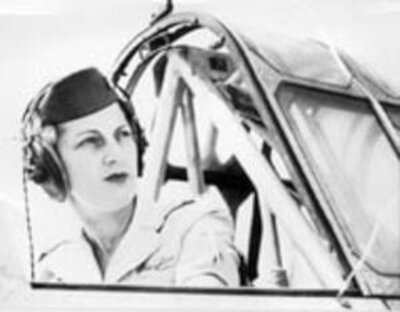 Selma Cronan
Selma Cronan
At first. this unconventional solution met with significant resistance. The United States was at war with thousands of male soldiers dying every day; did the Air Force really want to risk the lives of its women too? It took over a year, but eventually in 1943, the Women Airforce Service Pilots (WASP) force was formed, providing female pilots to test and deliver planes. In some cases, WASP soldiers flew military missions directly, tracking searchlights, and also instructed male trainee pilots.
Few realized that the woman in charge of WASP training was Jewish: an idealistic young woman named Selma Cronan. After the war, Selma continued her flying career, becoming a professional competitive pilot and flying in air shows all over the world.
Muriel Byck’s parents were Jews from Russia who made their way to London, where Muriel was born. Educated in France, Germany and London, when Britain declared war on Nazi Germany, Muriel volunteered to help. She joined the Royal Air Force Women’s Auxiliary Air Force, and rose through the ranks, becoming a section officer With the fate of Europe’s Jews hanging in the balance, she longed to do even more to battle Hitler.
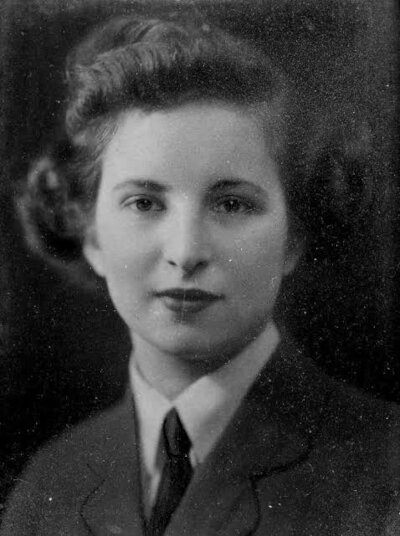 Muriel Byck
Muriel Byck
Her chance came when Muriel was approached by the top-secret Special Operations Executive (SOE), which planned surveillance and sabotage throughout Nazi-occupied Europe. Would Muriel be willing to risk her life to enter Europe and spy for the Allies?
Muriel agreed. After receiving extensive training in military maneuvers and radio operation, Muriel parachuted into occupied France during the night of April 8, 1944. Of the four members of her spying cell, she was the only woman. It was Muriel’s job to set up radio communications with Britain and with other SOE operatives in the country. The work was incredibly risky: every time she broadcast on her radio, the waves could be picked up by Nazi forces and her location revealed.
For two months, Muriel worked, never staying in the same place for long, and risking her life with every radio broadcast. She died in France from illness a few weeks after landing in the country and is buried in the Pornic War Cemetery in France.
Growing up in a traditional Jewish family in New York, Charlotte Chaney never saw herself as a hero. She attended nursing school and started dating a man named Bernard Chaney when she was still a teenager. When Barnard was drafted and stationed to Camp Bowie in Texas, Charlotte decided to serve her country too, and volunteered to serve in the Army Air Corps.
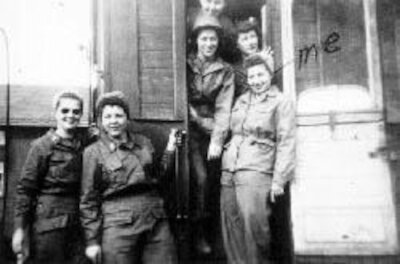 Charlotte Chaney, far right
Charlotte Chaney, far right
She worked as a nurse at Camp Bowie until 1944, when she and Barnard wed. Just a few months later, Charlotte got word that she was being sent overseas. In the waning days of WWII, Charlotte was sent to Reims and Neufchateau in northern France, then at Passover time, to the south of France. There, Charlotte helped procure Passover supplies for US soldiers. In May 1945, she was sent to the newly liberated concentration camp in Dachau in Germany to help set up a hospital there. Charlotte was the only Jewish nurse helping run the new hospital.
The sight that Charlotte found in Dachau would change her life. The oldest of the Nazi concentration camps, Dachau became the model for all other camps. Nearly a quarter of a million people were imprisoned there, and over 40,000 perished. The mostly Jewish prisoners Charlotte treated in her hospital were close to death. They were incredibly malnourished and were gravely ill with typhoid, tuberculosis and other diseases. Over a hundred patients died every day, despite Charlotte’s care. For three months, Charlotte did all she could to save the emaciated patients. For the rest of her life, she spoke about the horrors that greeted her in Dachau, educating others about what she’d witnessed.
Jewish sisters Ellan and Dorothy Levitsky worked as nurses in hospitals in Philadelphia throughout most of World War II, yet Ellan was restless. With so much carnage going on in Europe, she wanted to enlist and help the armed forces. Dorothy couldn’t imagine letting her sister enlist alone, so she agreed to sign up too.
 Tent mates in front of a WC-54 Ambulance. From L to R: 2d Lt. Dorothy F. Levitsky, 2d Lt. Angeline F. Paul, 1st Lt. Ellan J. Levitsky, 2d Lt. Agnes C. Stern.
Tent mates in front of a WC-54 Ambulance. From L to R: 2d Lt. Dorothy F. Levitsky, 2d Lt. Angeline F. Paul, 1st Lt. Ellan J. Levitsky, 2d Lt. Agnes C. Stern.
After completing basic training, the two Lts. Levitsky were sent to France, just in time for the last major German offensive of the war, variously known as the Ardennes Offensive or the Battle of the Bulge. For over a month in December 1944 and January 1945, German forces battled Allies in the Ardennes area of Belgium and Luxembourg. It was the deadliest battle American troops fought in World War II, and the third most deadly battle in United States military history. 75,000 American troops were injured, and nearly 20,000 perished. The Levitsky sisters worked feverishly to treat them, helping ensure the Allies emerged victorious.
After World War II, Dorothy and Ellan returned to the US, where they each married and continued their nursing career, never forgetting the intense months when they put themselves in danger to help the Allied war effort.
Many of the Jewish women who served during World War II were young women. Matilda Blaustine was already the mother of a grown daughter, Bernice, when they both joined the Women’s Army Auxiliary Corps (WAAC) together in 1942. After basic training, Matilda worked as a radar spotter for US Naval Intelligence in New York, locating enemy aircraft.
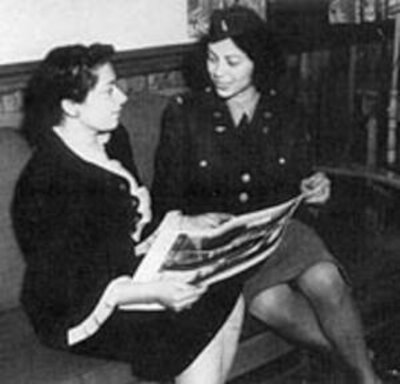 Matilda Blaustine and her daughter, Bernice.
Matilda Blaustine and her daughter, Bernice.
Following World War II, Bernice married and raised a family, while Matilda kept working, volunteering for the Hebrew Immigrant Aid Society, helping settle Holocaust survivors in Displaced Person Camps in Europe, and bringing them to safety in Israel, the US, and elsewhere.
Until she was 20, Marthe Cohn’s life was unremarkable. She was part of a tight-knit Jewish family in the French city of Metz, where she lived, with her parents, five sisters, and two brothers. Marthe realized the danger that Jews were in in neighboring Germany. After Kristallnacht, a massive pogrom throughout Germany and Austria in November 1938, her family opened their doors to cousins from Germany who fled the intense antisemitism there.
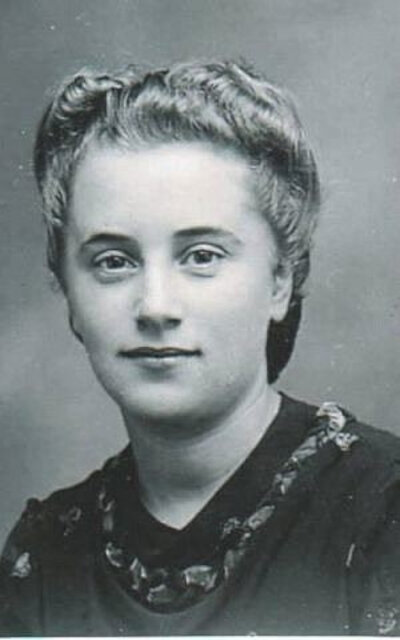 Mathe Cohn
Mathe Cohn
After Germany invaded France in May 1940, life for Marthe and all other French Jews changed overnight. Marthe’s boyfriend, a French resistance fighter, was arrested by the Nazis, tortured, and murdered. Marthe’s sister was arrested and murdered in Auschwitz. Martha desperately wanted to do all she could and volunteered to help the Resistance herself. She was fluent in German and had blond hair and blue eyes, making her a perfect candidate to spy in Germany. Finally, in 1944, Marthe got her chance: the Free French Army accepted her as a soldier; eventually she worked for the Free French Intelligence Service.
She was given a daunting order: pose as a German nurse who wants to learn what became of her fiancé back in Germany - and cross the border into Germany in order to spy. It took Marthe dozens of tries, but eventually she succeeded, entering Germany and posing as a German. She recalled being terrified, but persevered, eventually gathering valuable information to relay to Allied forces.

After the war, Marthe married and raised a proud Jewish family, but never spoke of her wartime heroism until 2006, when she published her memories, Bending Enemy Lines: The True Story of a French Jewish Spy in Nazi Germany.
When asked why she wrote her story, Marthe responded: “People have very short memories, very short. And if you don’t know the past you can not prepare for the future.”
These women and countless others displayed enormous courage and dedication during the darkest days of World War II. We owe it to all of them never to forget their sacrifice and their legacy.
With thanks to the Jewish Women’s Archive
